10 min read
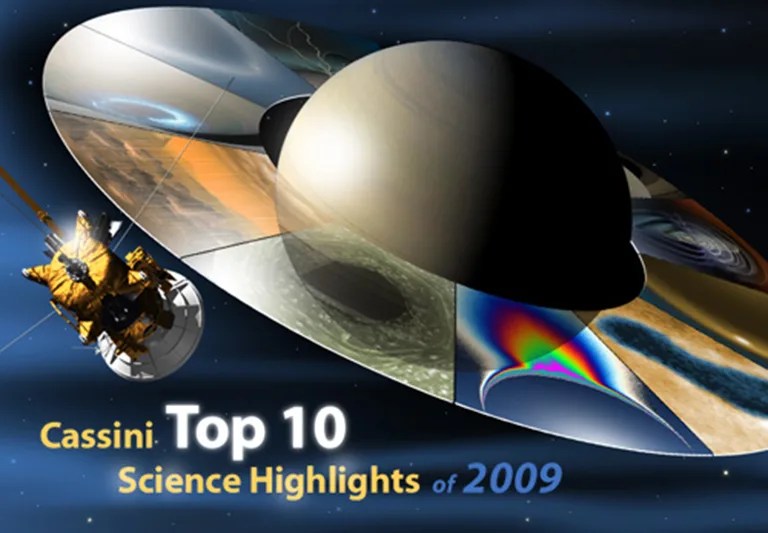
Cassini scientists pick the top highlights of the year.
From the view of the rings at equinox, to the first visible-light images of the northern polar hexagon in almost thirty years, the scientific bounty continues to grow.
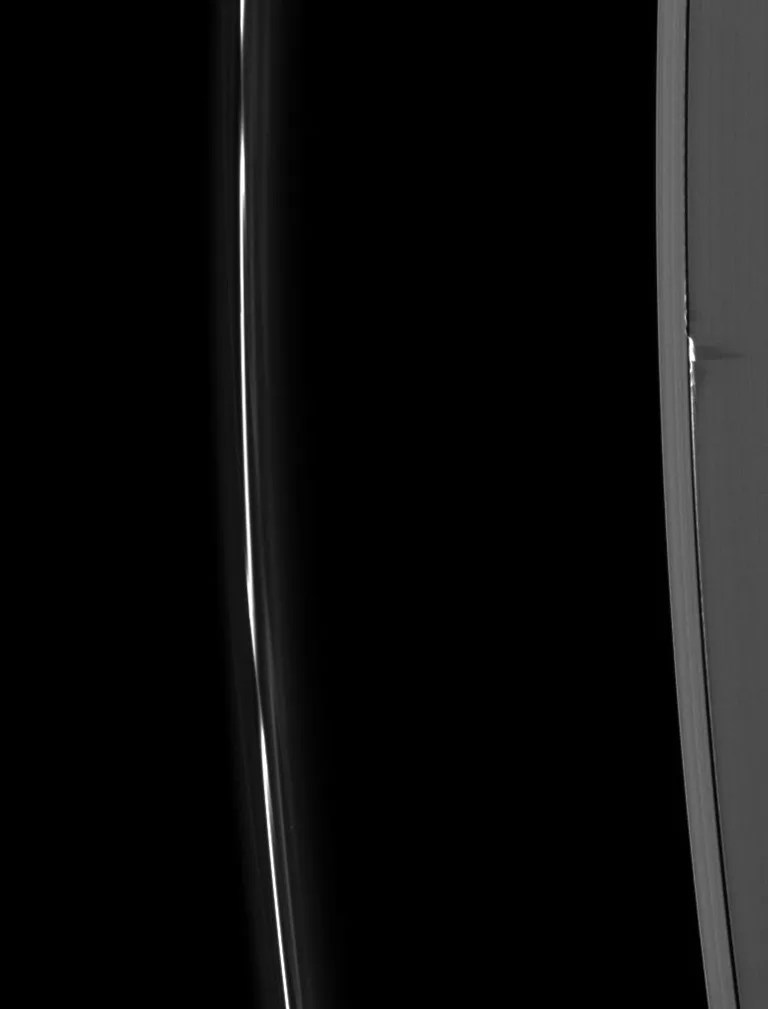
On Aug. 11, 2009 sunlight hit Saturn's rings exactly edge-on, making them all but disappear. For a few weeks around Saturn equinox, which occurs only once every 15 years, scientists used the Cassini spacecraft to look for vertically extended, three-dimensional structures in Saturn's rings caught in white glare from the low-angle lighting. The shadows of the newly discovered undulations and ridges were used to measure their height and breadth.
The heights of some of the newly discovered vertical formations are comparable to the elevations of the Rocky Mountains. One ridge of icy ring particles, whipped up by the gravitational pull of Saturn's moon Daphnis as it travels through the plane of the rings, looms as high as about 4 kilometers (2.5 miles). It is the tallest vertical wall seen within the approximately 10-meter thick rings.
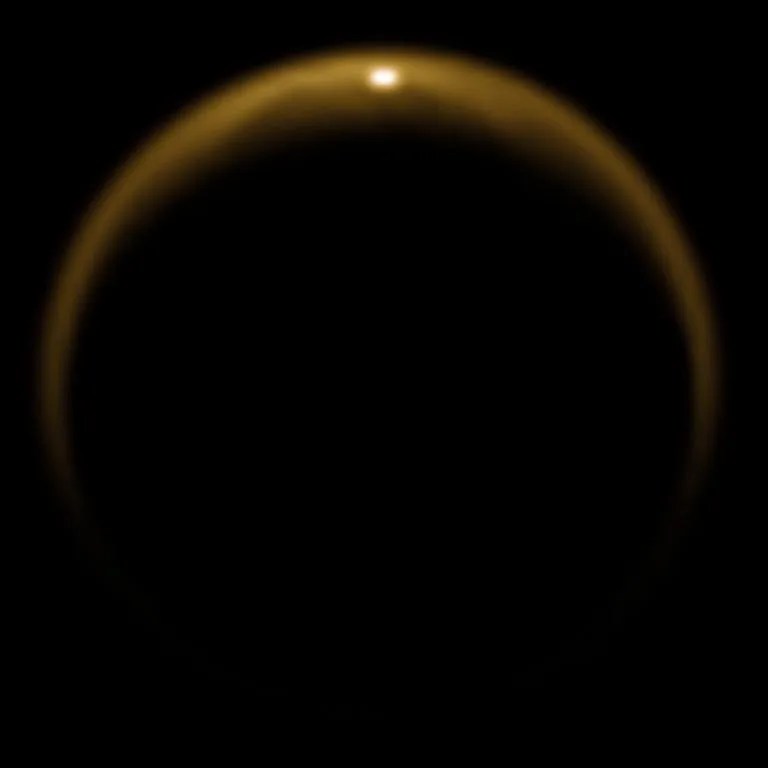
The Cassini spacecraft captured the first flash of sunlight reflected off a lake on Saturn's moon Titan, confirming the presence of liquid on the part of the moon dotted with many large, lake-shaped basins.
Cassini scientists had been looking for the glint, also known as a specular reflection, since the spacecraft began orbiting Saturn in 2004. But Titan's northern hemisphere, which has more lakes than the southern hemisphere, has been veiled in winter darkness. The sun only began to directly illuminate the northern lakes recently as it approached the equinox of August 2009, the start of spring in the northern hemisphere. Titan's hazy atmosphere also blocked out reflections of sunlight in most wavelengths. The serendipitous image was captured on July 8, 2009, using Cassini's visual and infrared mapping spectrometer (VIMS).
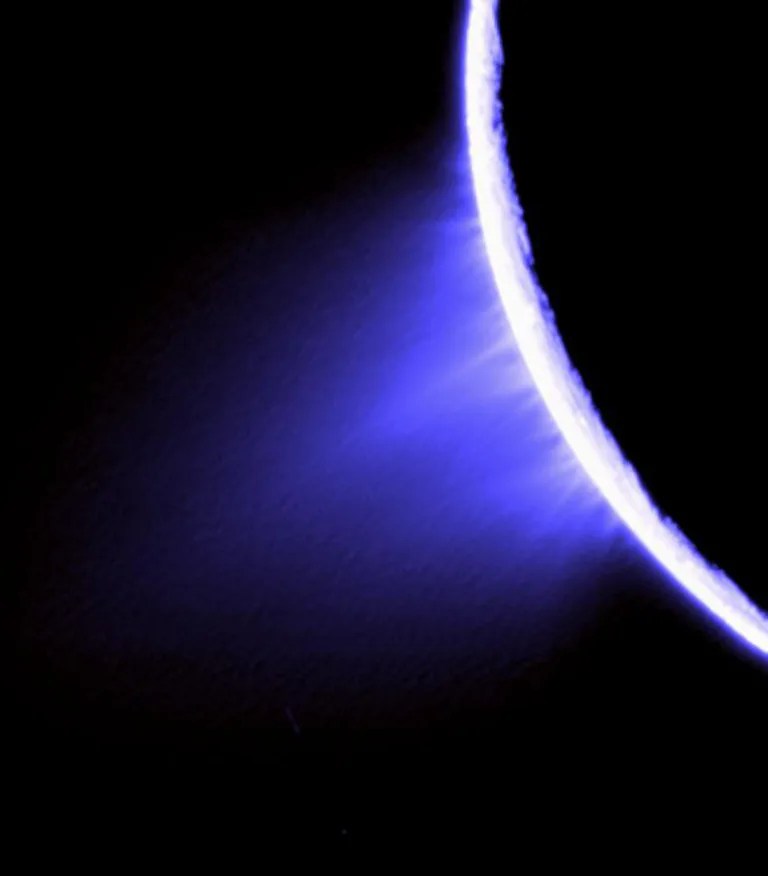
The Cosmic Dust Analyzer (CDA) on board the Cassini spacecraft has found sodium (Na) in varying concentrations in virtually all of its in-situ measurements of the water ice particles in Saturn's E ring. The main source of the E ring particles is considered to be the south polar plumes of the cryo-volcanically active moon Enceladus. The plumes of material originate from vents in the moon's surface ice.
During Cassini's tour in the Saturnian system the CDA has taken thousands of in-situ mass spectra of the particles present in Saturn's E ring. These spectra reveal the different constituents of an ice particle based on the mass of ions which form after a hypervelocity impact (~10 kms-1) of the particle onto the instrument. Frank Postberg and colleagues have analysed the CDA mass spectra and distinguish three main types based on the amount of sodium and organic compounds present: those that do not have sodium, those with a trace, and so-called type III that contain abundant sodium salts. The latter make up 6 percent of the particles. The high concentrations of sodium and the identified sodium minerals in type III mass spectra lead the authors to infer the presence of a slightly alkaline sodium salt water reservoir enriched in carbonates beneath the surface of Enceladus. The water reservoir could even be linked with a subsurface ocean. Since only liquid water can contain significant amounts of salts the authors suggest that the sodium-rich water-ice particles (type III, which contain about 1 percent salt) are directly frozen droplets from the liquid phase. The salts must have been leeched out from rocky material within Enceladus. This points to an interface between the hot rocky moon core and the ocean. However, whether the water that feeds the Enceladus plumes is still in contact with the core cannot be determined from these CDA measurements. The frozen droplets are sub-micron sized and additional water vapor condenses on them as they travel upward through the plume ice vents in Enceladus' ice crust.
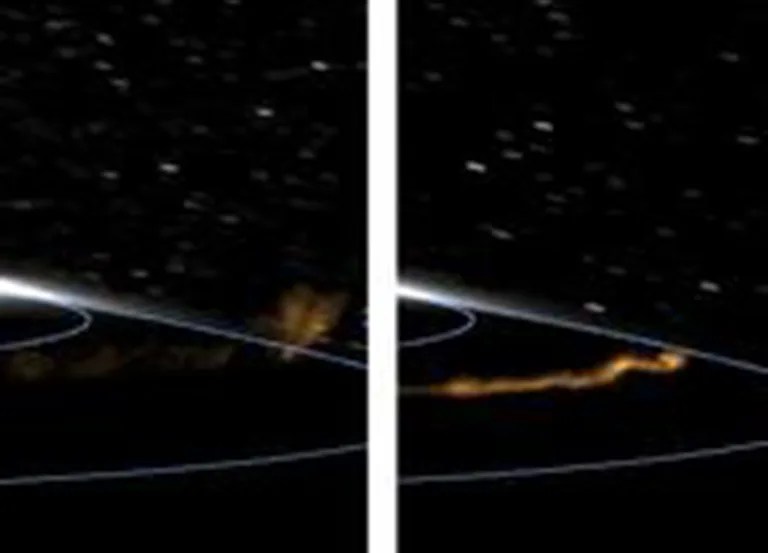
In the first video showing the auroras above the northern latitudes of Saturn, Cassini has spotted the tallest known "northern lights" in the solar system, flickering in shape and brightness high above the ringed planet. The new video reveals changes in Saturn's aurora every few minutes, in high resolution, with three dimensions. The images show a previously unseen vertical profile to the auroras, which ripple in the video like tall curtains. These curtains reach more than 1,200 kilometers (750 miles) above the edge of the planet's northern hemisphere. The images are colorized orange here; scientists are working to understand the true color of Saturn’s northern lights.
Data collected during two close flybys of Saturn's moon Enceladus by NASA's Cassini spacecraft showed ammonia coming from the plumes of Enceladus. The data collected by Cassini's Ion and Neutral Mass Spectrometer (INMS) during Enceladus flybys in July and Oct. 2008, were released in the July 23, 2009 issue of the journal Nature.
The presence of ammonia provides strong evidence for the existence of at least some liquid water. How could ammonia equate to liquid water inside an ice-covered moon in one of the chillier neighborhoods of our solar system? As many a homeowner interested in keeping their abodes spick and span know, ammonia promptly dissolves in water. But what many people do not realize is that ammonia acts as antifreeze, keeping water liquid at lower temperatures than would otherwise be possible. With the presence of ammonia, water can exist in a liquid state to temperatures as low as 176 degrees Kelvin (-143 degrees Fahrenheit).
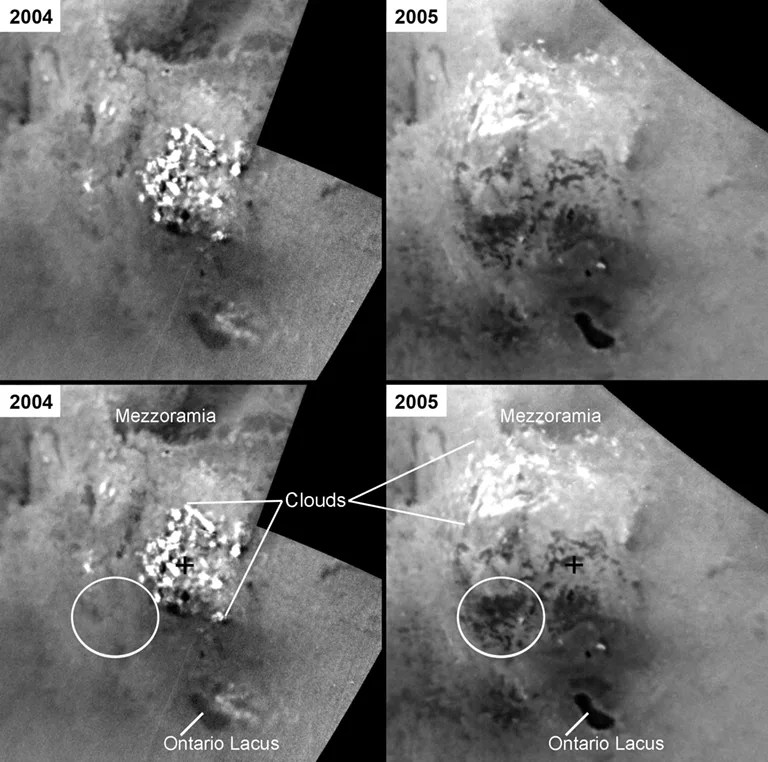
Recent images of Titan from NASA's Cassini spacecraft affirm the presence of lakes of liquid hydrocarbons by capturing changes in the lakes brought on by rainfall.
For several years, Cassini scientists have suspected that dark areas near the north and south poles of Saturn's largest satellite might be liquid-filled lakes. An analysis led by Elizabeth Turtle of the Johns Hopkins University Applied Pphysics Laboratory published Jan 29, 2009 in the journal Geophysical Research Letters of recent ISS images of Titan's South Polar Region reveals new lake features not seen in images of the same region taken a year earlier. The presence of extensive cloud systems covering the area in the intervening year suggests that the new lakes could be the result of a large rainstorm and that some lakes may thus owe their presence, size and distribution across Titan's surface to the moon's weather and changing seasons.
Comparison of radar and imaging science subsystem (ISS) images of Titan taken four years apart shows that the southern high latitude Ontario Lacus has shrunk during that time. With the help of radar altimetry data to calculate surface slopes, the observed shrinkage yields a change in the volume of the liquid of about 15 cubic kilometers-- an upper limit because the radar sees more deeply into the lake than does the ISS. The season on Titan since Cassini's arrival in 2005 corresponds to southern mid- to late summer, during which time methane should be evaporating. But we also know ethane is present from data taken by the Cassini visual and infrared mapping spectrometer (VIMS). Ethane will not evaporate as quickly as methane, and so stays behind. Thus, Ontario Lacus has changed in a way consistent with the hypothesis that it is filled with methane/ethane liquid.
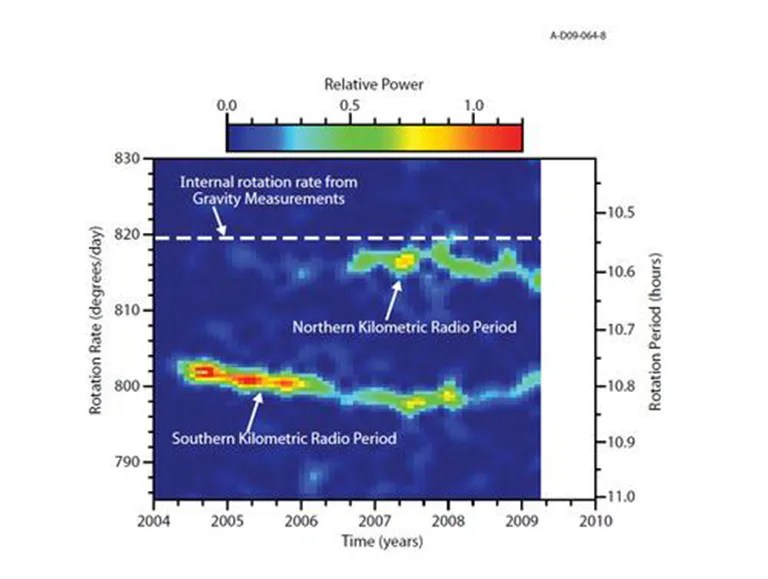
The most interesting discovery from 2009 in the magnetosphere was that the modulation periods of Saturn kilometric radiation in the Northern and Southern Hemispheres of Saturn are different and drifting.
In years past, Cassini scientists made the puzzling discovery that the rotation period of the planet, as clocked by the kilometric radiation signature in the magnetosphere, is irregular – irregular with a significantly different magnitude than anything seen at the planet Jupiter. Earth has the odd leap second that must be added to the length of the day compared to an atomic clock. Adjustments to Saturn’s rotation rate, as clocked by the kilometric radiation signature, are on the order of thirty seconds to ten minutes, and have drifted over Cassini’s five-year mission. The conclusion is that the magnetic field external to the planet is not directly coupled to the interior and the external magnetosphere 'slips' with respect to the internal rotation of the planet.
This year, Cassini scientists noted that the modulation of the kilometric radiation actually has two periods, a faster one for the Northern hemisphere source of the radio emission and slower one for the Southern hemisphere source. The Northern radio emission period, while faster, is still somewhat slower than the rotation period of the deep interior, as derived from gravity measurements and the shape of Saturn.
The reason for the difference in modulation rate of kilometric radiation in the two hemispheres is unclear, but one idea is that because Saturn was experiencing summer in its Southern hemisphere during the first 5 years of the Cassini mission, the conductivity of the upper Southern atmosphere would be greater due to the solar illumination, contrasted with the Northern atmosphere which spends much of Northern winter with little or no solar illumination. The conductivity may play a role in the amount of slippage between the magnetosphere and the interior. Some Cassini scientists predict that the northern and southern modulation rates may gradually switch in the near future following the equinox when the Northern hemisphere will be illuminated and the Southern hemisphere will be mostly in darkness.
Of course, other scientists predict that the modulation rates will not switch hemispheres as equinox passes, in accordance with the notion that there is some other explanation for the different modulation rates. So the project scientists eagerly await the data that will prove which of these two theories is correct.
Cassini has found two distinct types of clouds associated with Saturnian thunderstorms: (1) relatively bright ammonia clouds and (2) unusually dark clouds that strongly absorb light across the spectrum from the visible at 0.6 micron to the infrared at 4.3 micron. Thermo-chemical considerations indicate that most of the clouds we see are comprised of ammonia ice; scientists had not seen the spectral signature of ammonia... until now, in some thunderstorm clouds.
The spectrally dark clouds likely have a component of carbon soot embedded within them, which can be produced over many years by the pyrolysis of methane molecules via thunderstorm-generated lightning. Convective currents produced by a thunderstorm then carry the soot to the upper troposphere, in the guise of particles embedded within typically bright particles in the upper atmosphere.
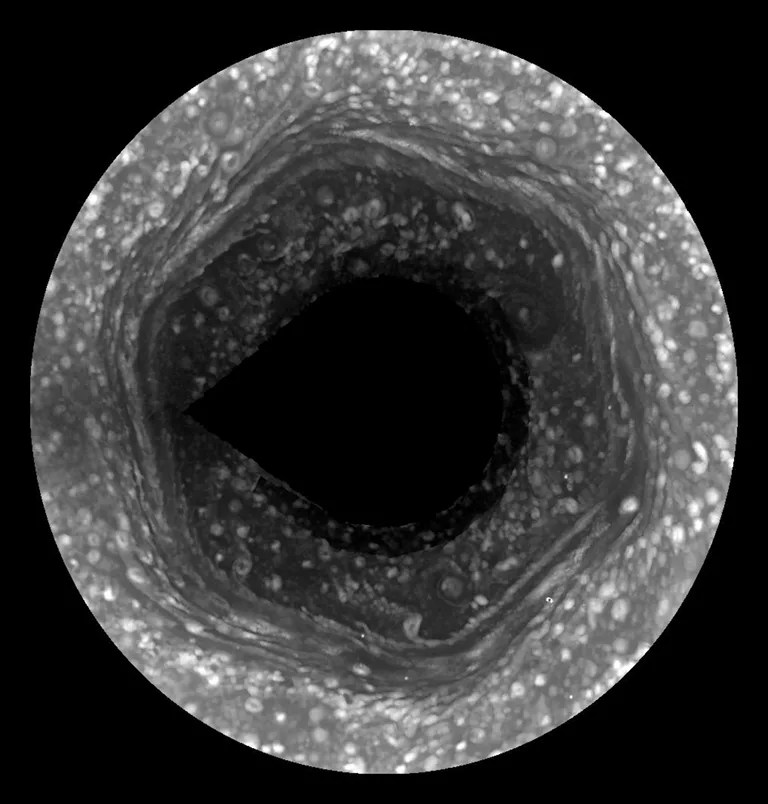
After waiting years for the sun to illuminate Saturn's North Pole again, cameras aboard NASA's Cassini spacecraft have captured the most detailed images yet of the intriguing hexagon shape crowning the planet.
The new images of the hexagon, whose shape is the path of a jet stream flowing around the North Pole, reveal concentric circles, curlicues, walls and streamers not seen in previous images. The last visible-light images of the entire hexagon were captured by NASA's Voyager spacecraft nearly 30 years ago, the last time spring began on Saturn. After the sunlight faded, darkness shrouded the North Pole for 15 years. Much to the delight and bafflement of Cassini scientists, the location and shape of the hexagon in the latest images match up with what they saw in the Voyager pictures.







